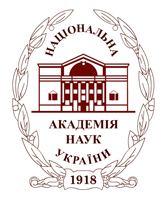Kopanieva Viktoriia
Development of the Cognitive Concept of Scientific CommunicationAbstract: The linguistic and neurophysiological sources of cognitive sciences, which were examined in M. Rubakin’s bibliological theory, are analyzed. He noted an ambiguous correspondence between the knowledge of a certain person and the documentary information obtained as a result of the verbalization of this knowledge. The necessity of accounting for the cognitive aspects of communication is substantiated to facilitate the user’s awareness of external information. The entropy character of the processes of information exchange between individuals and socio-technical systems has been established. It is proposed to create cognitive-oriented resources to reduce information entropy in scientific communication systems. Recommended as a source of information for their formation is the use of data from the bibliographic apparatus of the library. Approaches to the convergence of information and communication technologies and cognitive-oriented resources are considered. Keywords: scientific communication, bibliology, knowledge, information, cognitive science, M. Rubakin.
Author(s) citation:
Cite:
Kopanieva Viktoriia (2017). Development of the Cognitive Concept of Scientific Communication. Bibliotechnyi visnyk, (6) 3-9. (In Ukrainan). - http://bv.nbuv.gov.ua/doc/bv_2017_6_3
References: - Alpatov, V. M. (2005). Voloshinov, Bakhtin i linhvistika [Voloshinov, Bakhtin and linguistics]. Moskva [in Russian].
- Vyhotskii, L. S. (1999). Myshlenie i rech [Thinking and speech]. Moskva : Labirinth [in Russian].
- Humbolt, V. (1984). Izbrannye trudy po iazykoznaniiu [Selected Works on Linguistics]. Moskva : Progress [in Russian].
- Ilhanaieva, V. O. (2009). Sotsialna komunikatsiia yak obiekt teoretyzatsii [Social communication as an object of theorization]. Filosofiia liudskoho spilkuvannia: filosofiia, psykholohiia, sotsialna komunikatsiia – Philosophy of human communication: philosophy, psychology, social communication, 1, 60–67 [in Ukrainian].
- Kopanieva, V. (2009). Biblioteka yak tsentr zberezhennia resursiv Internet [Library as a center for saving Internet resources]. Kyiv [in Ukrainian].
- Kostenko, L. I., Zhabin, A. I., Kopaneva, E, A., Symonenko, T. V. (2014). Naukova periodyka Ukrainy ta bibliometrychni doslidzhennia [Scientific periodicals of Ukraine and bibliometrics research]. Kyiv [in Ukrainian].
- Potebnia, A. A. (1993). Mysl i yazyk [Thought and language]. Kyiv : SINTO [in Russian].
- Pocheptsov, H. H. (2010). Sotsialni komunikatsii i novi komunikatyvni tekhnolohii [Social communications and new communicative technologies]. Komunikatsiia – Communication, 1, 19–26 [in Ukrainian].
- Rizun, V. V. (2012). Nacherky do metodolohii doslidzhen sotsialnykh komunikatsii [Sketches for the methodology of research in social communications]. Psykholinhvistyka – Psycholinguistics, issue 10, 305–314 [in Ukrainian].
- Rubakin, N. A. (1977). Psihologiia chitatelia i knigi [Psychology of the reader and the book]. Moskva : Kniha [in Russian].
- Ruchkin, V. N., Romanchuk, V. A., Fulin, V. A. (2012). Kognitologiia i iskusstvennyi intellekt [Cognitology and artificial intelligence]. Riazan : Intermeta [in Russian].
- Sokolov, A. V. (2002). Obshhaia teoriia socialnoi kommunikatsii [General Theory of Social Communication]. Sankt-Peterburg : Izd-vo Mikhailova V. A. [in Russian].
- Kholod, O. M. (2011). Sotsialni komunikatsii: sotsio- i psykholinhvistychnyi analiz [Social communications: socio-psycholinguistic analysis]. Lviv : PAIS [in Ukrainian].
- Shreider, Iu. A. (2010). Socialnye aspekty informatiki [Social aspects of informatics]. NTI. Ser. 2: Inform. processy i sistemy – STI. Ser. 2: Inform. processes and systems, 2, 18–27 [in Russian].
- Shannon, C. E. (1948). A Mathematical Theory of Communication. Bell System Technical Journal, Vol. 27, 379–423, 623–656. doi: https://doi.org/10.1002/j.1538-7305.1948.tb00917.x
|
 bv.nbuv.gov.ua
bv.nbuv.gov.ua
![]() Content (2017, Issue 6)
Content (2017, Issue 6)![]()
![]()